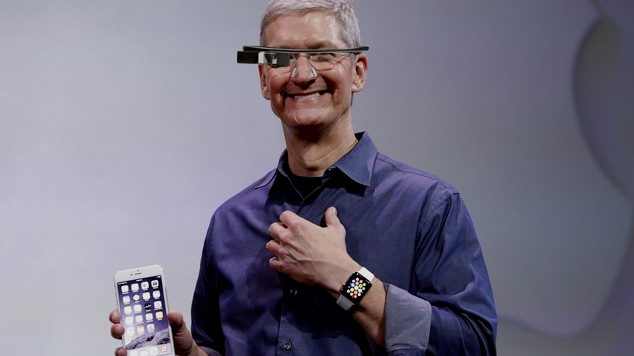
Don't Buy Apple Watch Because Google Glass (Or Something)
Jonathon M. Trugman, New York Post:
Cook is trying to reinvent the watch, but Google didn’t have much luck trying to re-imagine eyeglasses.
Google put a video camera with e-mail and telephony capabilities on a pair of glasses. They released the narcissist’s dream on April 15, 2013, to 8,000 hand-picked “Glass Explorers” at a price of
$1,500 … plus $225 for prescription lenses.On May 15, 2014, Google Glass was released to the public. And on Jan. 15, 2015, Google announced that it had stopped production but remained “committed to the development” of the glasses “never admit defeat,” the Silicon Valley motto). …
Just remember, Google Glass was heralded as one of the best inventions of 2012.
Not all wearables are created equal. And that’s particularly true when comparing a limited R&D research platform to a full-blown global commercial product.
When we first started building WatchAware and wrapping our heads around the actual potential of Apple Watch, A.I. made a basic observation that’s stuck with me ever since: People don’t wear glasses by choice. People wear glasses because they have to.
And even in that subset, a large contingent foregoes the bespectacled look in favor of contact lenses, due to equal parts comfort, convenience, and presentation. When they’re fashionable, glasses are fashionable by necessity. On the other hand, people almost always wear wristwatches by choice; they don’t need them to correct basic disabilities or increase the performance or precision of their natural senses in any appreciable, universal way. Yes, some hipsters might wear non-corrective lenses in thick-bridged ’50s tortoiseshell frames to go with their trendy retro haircuts and meticulously crumpled collars, but for the most part, folks wear glasses because their eyes are messed up.
I suspect Google Glass did better business than Google Cane or Google Neck Brace would have, but just barely.